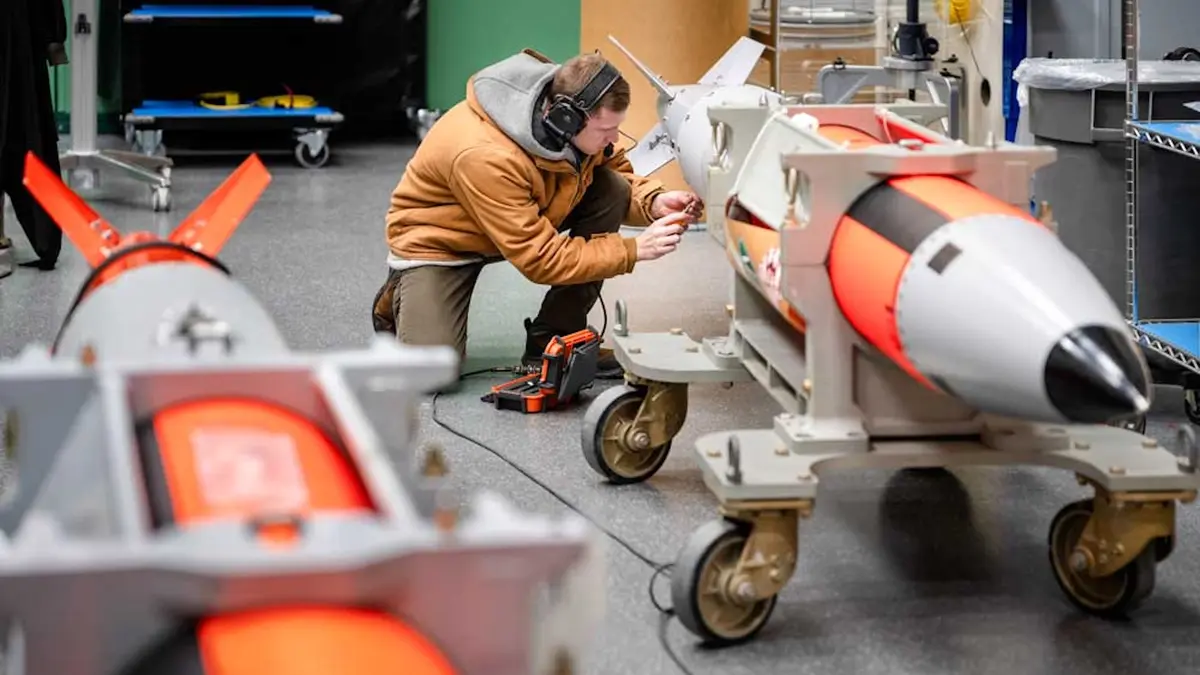El Sandia National Laboratory (EEUU) anunció que ha comenzado a producir su versión más moderna de la bomba nuclear de la familia B61. De lanzamiento aéreo y sin propulsión (caída libre), la B61 está en servicio desde hace 50 años y es la más antigua de las armas nucleares de ese país. Ha recibido sucesivas modernizaciones y aunque sigue siendo una bomba de gravedad, la B61-13 dispone de un kit de guiado y tal vez la novedad más importante, es que su efecto nuclear terminal es variable, entre 10 y 360 kilotones (kt). Solo a modo de referencia, las bombas lanzadas en Hiroshima y Nagasaki tenían un poder destructivo de entre 12 y 23 kt.
Sandia National Laboratories (SNL) has revealed the US’ newest nuclear weapon.
The B61-13 variable-yield gravity bomb is going into full production seven months ahead of schedule.
According to an SNL press statement, “the B61-13 program used innovative program planning that resulted in projected delivery seven months earlier than expected, a more than 25% decrease in overall time to first production unit.”
The new weapon will play a key role in the US efforts to modernize its nuclear deterrent amid rising global tensions.
B61-13: The US’ newest nuclear warhead
Though the number of nuclear weapons has dramatically declined since the end of the Cold War, the US and Russia still have roughly 5,000 nuclear warheads each in their arsenals. In recent years, China has dramatically increased its nuclear deterrence. With the ongoing war in Ukraine and President Trump’s antagonistic approach to foreign policy, tensions are sky-high.
In 2023, the Department of Energy’s National Nuclear Security Administration (NNSA) was tasked with building a new nuclear gravity bomb called the B61-13. The term gravity bomb simply refers to a weapon that is dropped from a plane and is not self-propelled.
The B61-13 was developed for $92 million, according to a report from New Atlas. The bomb is a variant of the B61-7, though it features more advanced safety systems. The B61-13 will also feature a tail kit. This means it can pilot itself to its target once it is dropped from the sky.
Importantly, the B61-13 is a variable warhead, which can be programmed for a yield of between 10 and 360 kilotons. The idea is that it can be used for different targets while preventing collateral damage. As a point of reference, the B61-12 has a maximum yield of 50 kilotons.
To put that into perspective, the bomb the US military dropped on Hiroshima had a yield between 12 and 18 kilotons. The Nagasaki bomb, meanwhile, had a yield between 18 and 23 kilotons. As reported by Newsweek in 2023, this means the B61-13 is 24 times more powerful than the bomb that hit Hiroshima.
The US’s oldest nuclear weapons program
The B61 nuclear gravity bomb has been in service for more than 50 years, making it the oldest nuclear weapon in the US arsenal. The very first B61 bombs entered service in 1968. Since then, they have undergone several life extension programs.
The B61-13 warheads will replace the B61-12 and older B61-7. This means the US will have a greater deterrent capability without increasing the number of warheads in its stockpile.
The B61-13 will first fly aboard the B-2 Spirit bomber. Once operational, Northrop Grumman’s advanced B-21 stealth bomber will carry the new warheads.


